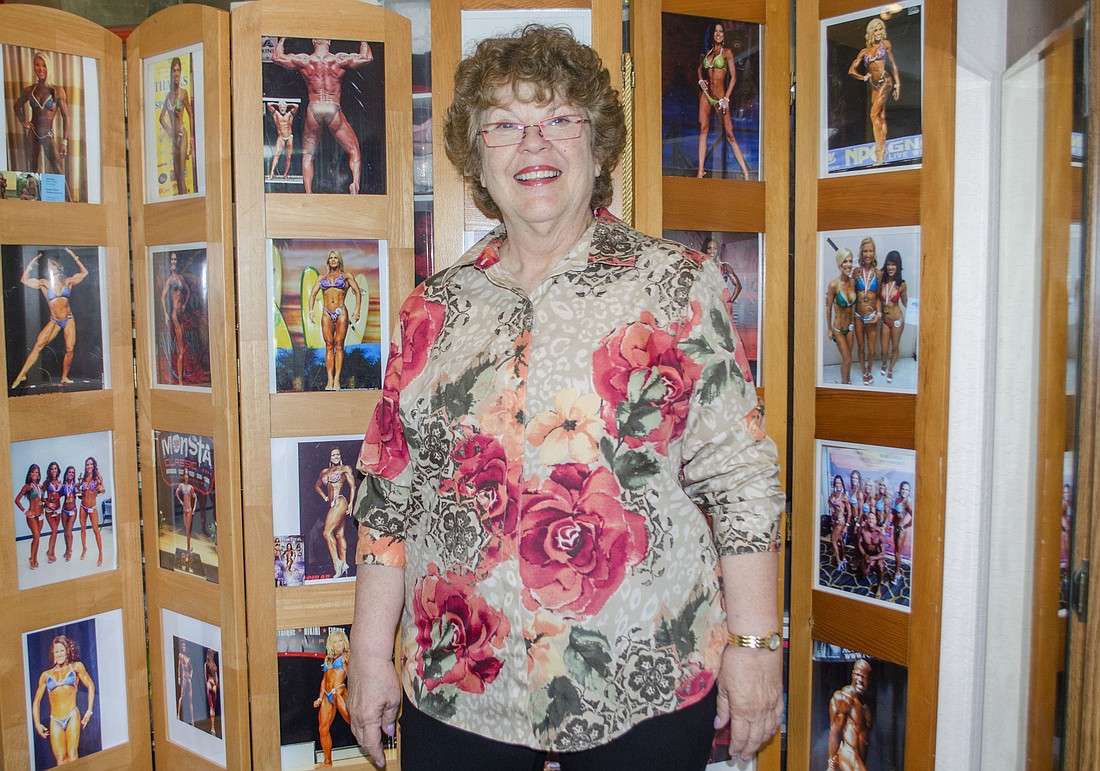- November 23, 2024
-
-
Loading

Loading

Choose a job you love, and you’ll never work a day in your life — or so the adage goes.
It may be a cliche, but June Blaustein lends a level of veracity to that phrase.
She’s not a classically trained designer or even a seamstress. In fact, she’s a speech pathologist, yet she spends most of her days sitting in her studio gluing rhinestones to what a layman might misidentify as a bikini.
“It’s not the same as a regular bathing suit,” Blaustein said.
Although it resembles what one might see at a swimming pool, it’s not for swimming. The suits are meticulously designed for Blaustein’s clients — a group once broadly identified as female bodybuilders.
Bodybuilding has become specialized and highly competitive, and some participants prefer to identify as “fitness competitors.”
Female athletes compete in either bikini, figure or physique divisions, each requiring a specific body build and attire. When it comes to navigating those particulars, Blaustein has made herself an expert.
The suits “have to fit perfectly in order to show off the hard work, but tastefully,” longtime client and local competitor Holly Beck said.
“June is just excellent at it,” she said.
Blaustein began designing garments in 1984 for ballroom dancers, but about 10 years ago, her creations took on a new look thanks to a request from local fitness competitor Edith Driver.
“Can you make one of these?” Blaustein remembers Driver asking. “And she held up this little bitty thing.” She can’t help but laugh when she remembers her introduction to the world of fitness competition. Still, she cautiously agreed to do the work.
Her first suit was an experiment of trial and error. It was a puzzle, and Blaustein was determined to solve it.
“I want to make sure it fits like paint.” - June Blaustein
The stakes are high when constructing a suit for fitness competitors, making it all the more challenging. Not only are their features augmented by rigorous weight lifting, any gap in the fabric could cost athletes on stage.
“I want to make sure it fits like paint,” Blaustein said.
While making her first suit, she had one thing in mind.
“Oh my God, I hope it fits,” she remembers thinking after finishing Driver’s suit.
In the end, it did fit, and Driver’s suit became the first of hundreds she has constructed in the course of 10 years.
Despite her success, there was no epiphany for Blaustein — no moment that compelled her to solely design suits for elite athletes. It was a series of little successes that kept her interested.
“It’s kind of like problem-solving, which is also a lot of fun,” Blaustein said. “If something doesn’t fit, I’ll make it again until I get it right.”
She is as devoted to her work as she is proud of it, a characteristic that has garnered her a strong following.
“There are a million ways for it to go wrong, and that has never happened,” Beck said. “She’s always there, she’s always been consistent.”
Blaustein doesn’t advertise. She lets her work speak for itself.
She maintains a regular and ever-growing clientele and has fostered friendships with repeat customers, like Beck, who has called on Blaustein to design her competition attire for nearly a decade.
Blaustein welcomes her clients into her studio — a little haven tucked in the rear of the house she shares with her mother and their pet birds.
Her studio is kind of organized chaos where each piece of fabric and jewel have a place.
She spends hours on end at her desk, making up to 70 suits a year. She charges between $250 and $1,000 depending on the intricacy of the design. Each can take between six and 12 hours to make, but Blaustein doesn’t mind.
For her, there are the careers that people have to do. They’re stereotypically practical.
But her design work isn’t like that. It’s her happy career.
“As long as I can keep doing this, I’m really happy,” Blaustein said.